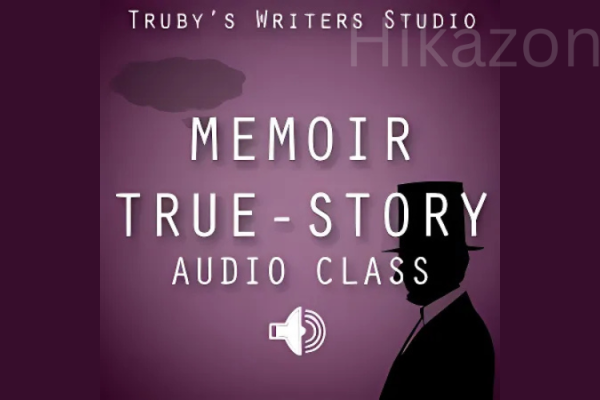-
×
 Clear's Bagua Intensive Online Course By Sigung Clear
1 × $179.00
Clear's Bagua Intensive Online Course By Sigung Clear
1 × $179.00 -
×
 BeiFang Qi Taiji Zhang (Tai Chi Cane Kata) Download By Cane Masters
1 × $8.00
BeiFang Qi Taiji Zhang (Tai Chi Cane Kata) Download By Cane Masters
1 × $8.00 -
×
 Urban Grime by Clinton Lofthouse
1 × $8.00
Urban Grime by Clinton Lofthouse
1 × $8.00 -
×
 Enamel Pin-ciples By Candy - Olish Studio
1 × $39.00
Enamel Pin-ciples By Candy - Olish Studio
1 × $39.00 -
×
 Data Modeling for Power BI Video Course By Sqlbi
1 × $78.00
Data Modeling for Power BI Video Course By Sqlbi
1 × $78.00 -
×
 Land Flipping 101 Course By Kris Thomas
1 × $209.00
Land Flipping 101 Course By Kris Thomas
1 × $209.00
The Writers Handbook by Kieran Drew – Digital Download!
Content Proof:
The Writer’s Handbook by Kieran Drew
In an age where digital content reigns supreme, the art of writing has undergone significant transformation. Kieran Drew’s The Writer’s Handbook emerges as an essential compass for both aspiring writers and seasoned content creators looking to navigate the ever-changing landscape of effective communication. This comprehensive guide provides practical strategies, tips, and tools to help writers not only enhance their writing skills but also cultivate their unique voices in a crowded digital marketplace. By drawing from his experiences and insights, Drew empowers readers to overcome common hurdles such as writer’s block and to engage their audiences authentically. Whether you’re a blogger, marketer, or novelist, this handbook serves as a vital resource, unlocking the secrets to compelling, impactful writing.
As we delve deeper into the pages of this handbook, we will explore its purpose, goals, structure, and key topics. We will also discuss effective writing techniques, common mistakes to avoid, and the significance of audience engagement. We’ll examine how understanding your target audience can transform your writing approach and provide practical examples that illustrate the handbook’s principles. The insights shared here will not only highlight the core components of The Writer’s Handbook but also inspire you to embrace your writing journey with confidence.
Purpose of The Writer’s Handbook
The purpose of The Writer’s Handbook is to be a guiding light for anyone aiming to enhance their writing skills and engage effectively with their audience. Think of it as your personal writing coach, offering wisdom and strategies that transform your writing process into a more structured and efficient experience. Just as a seasoned gardener knows the right conditions to nurture flowers to bloom brightly, Drew equips writers with the knowledge to cultivate their unique voices and produce outstanding content.
The handbook serves multiple objectives that can enhance your writing experience:
- Educational Resource: It provides foundational knowledge that can be beneficial for both novice and advanced writers.
- Creative Catalyst: Through writing prompts and creative exercises, the handbook stimulates inspiration and helps overcome writer’s block.
- Analytical Guide: It encourages writers to assess their work critically, fostering a mindset of continuous improvement.
By merging educational elements with creative inspiration and analytical insights, The Writer’s Handbook positions itself as an indispensable companion for those wishing to produce compelling and audience-focused writing.
Goals and Objectives of the Handbook
The Writer’s Handbook is rooted in a desire to equip writers with the skills necessary to succeed in their craft. Here are its primary goals and objectives:
- Resource Material: At the heart of the handbook is a collection of follow-along checklists for the various stages of writing. This includes detailed outlines for both short and long-form content, allowing users to streamline their writing process and ensure coherence in their narratives.
- Idea Generation: The handbook serves as a creativity booster by offering a variety of writing prompts that encourage users to generate innovative content ideas. Just as a painter experiments with colors on a canvas, writers can explore new themes and styles, avoiding the mindset traps associated with creative stagnation.
- Content Analysis: Through engaging video content critiques, writers are offered a unique opportunity to understand common writing mistakes. This practical approach helps readers recognize missteps in their own work, preventing similar errors in future projects.
- Storytelling Techniques: With an emphasis on the psychology behind engaging narratives, the handbook teaches effective storytelling principles. These insights can significantly enhance a writer’s ability to create hooks and relatable characters, generating emotional resonance with audiences.
- Building Confidence: The structure and frameworks provided within the handbook aim to instill a sense of confidence in writers. Just as an architect requires a blueprint before constructing a building, writers are encouraged to utilize templates and strategies to guide their ideas and expressions effectively.
Ultimately, The Writer’s Handbook aspires to act as a comprehensive toolkit, empowering writers to refine their skills, boost their creativity, and forge a distinct voice in the digital landscape.
Content Overview
Drew’s Writer’s Handbook contains a well-organized layout designed to cover all critical aspects of writing. At first glance, it reads like a masterclass, with each chapter contributing uniquely to the reader’s journey. Drawing an analogy akin to assembling a jigsaw puzzle, each piece in this handbook fits together to form a complete picture of effective writing and communication.
Among the key content elements are:
- Fundamentals of Good Writing: An introduction that revisits timeless writing principles, which remain relevant even as technology evolves. It focuses on clarity, brevity, and readability as the cornerstones of effective communication.
- Clarity and Brevity: Here, Drew delves into techniques for crafting concise and easily understandable writing. This section includes valuable insights on eliminating jargon and complex phrases to keep the reader engaged.
- Readability and Design: The handbook addresses visual aspects such as layout and typography, emphasizing that attractive design can enhance the effectiveness of written work.
- Documentation and Citations: It emphasizes the significance of citing sources correctly, fostering credibility and trust among audiences.
With additional resources like study aids and videos providing further illumination, The Writer’s Handbook is a treasure trove for writers seeking to elevate their craft in an intensely competitive space.
Structure of The Writer’s Handbook
The structure of The Writer’s Handbook is thoughtfully organized to guide readers through the intricacies of writing while ensuring a coherent flow of information. Picture flipping through an engaging workbook: each section feels like an interactive lesson, skillfully crafted to impart invaluable skills and insights.
- Sectional Layout: The handbook is divided into distinct sections, each addressing a specific element of writing. This organization allows writers to locate information quickly and focus on areas they wish to improve upon.
- Practical Exercises: Accompanying each topic are practical exercises aimed at reinforcing the concepts discussed. For instance, after learning about crafting engaging hooks, writers might be encouraged to create their own, fostering creativity and encouraging experimentation.
- Visual Elements: To further enhance comprehension, the handbook employs visuals such as infographics and charts that break down complex information. Visual aids serve to clarify processes, making the content more digestible.
- Actionable Items: Each section concludes with actionable items that readers can implement immediately. This emphasis on practical application ensures that knowledge gained transcends theory and becomes an integral part of the writer’s toolkit.
In this structured approach, The Writer’s Handbook invites readers into a world where learning is not only effective but also enjoyable making the journey more rewarding for every aspiring writer.
Key Topics Covered
The Writer’s Handbook covers a wide range of topics designed to support writers in various aspects of their craft. Below is a detailed overview of the essential themes explored within its pages:
- Nailing Your Niche: Identifying one’s niche can sometimes feel like searching for a needle in a haystack. Drew simplifies this process by highlighting significant aspects to consider while emphasizing the potential of platforms like Twitter to connect with specific audiences.
- Engaging Content Creation: Strategies for producing scroll-stopping content take center stage in this section. Drew outlines the “three pillars of magnetic writing” crucial for captivating readers, alongside innovative frameworks such as “StoryTweet.”
- Long-Form Content Strategies: The handbook identifies various impactful long-form content models and provides pre-writing strategies that help maintain simplicity and engagement, enriching the writing experience.
- Building Authority: Readers learn how to establish themselves as experts through audience engagement and leveraging data to refine their writing practices, empowering their unique voices.
- Maintaining Writing Consistency: The emphasis on creating sustainable writing routines helps prevent burnout, ensuring that writers can produce quality content consistently over time.
The integration of these key topics establishes a comprehensive roadmap for writers eager to improve their craft and make their mark in an ever-evolving digital landscape.
Writing Techniques and Strategies
Effective writing hinges on the adoption of various techniques and strategies to enhance clarity and engagement. In The Writer’s Handbook, Drew goes beyond merely illustrating concepts; he offers actionable strategies that writers can implement immediately to see tangible improvements in their work.
- Understand Your Audience: A paramount technique is tailoring writing to meet the expectations and interests of specific audiences. Just as a musician considers their audience when composing a song, writers must be aware of their readers’ needs to create relevant content.
- Organize Your Ideas: Outlining main points and employing topic sentences in paragraphs significantly enhances the logical flow of writing. This method helps readers navigate through the content smoothly, making it easier to digest.
- Strong Thesis Statements: Crafting clear thesis statements that encapsulate main arguments provides a strong foundation for effective writing. It keeps the writer focused and ensures that the content remains cohesive.
- Be Concise: Pruning unnecessary words and jargon allows the message to shine through without clutter. This clarity prevents alienating readers who might struggle to decipher convoluted sentences.
- Use Examples and Evidence: Employing relevant examples bolsters arguments and enriches the reader’s understanding, giving them context for the points being made.
Through these strategies, Drew offers tangible tools designed to empower writers to sharpen their skills and produce impactful, reader-centered content.
Practical Tips for Effective Writing
To truly excel in writing, The Writer’s Handbook provides practical tips that writers can employ regularly. These sage pieces of advice serve as helpful guidelines for both beginners seeking basics and experienced writers wishing to enhance their craft.
- Audience Understanding: Knowing who you’re writing for can make all the difference in shaping your tone and style. Tailoring content to meet audience expectations is akin to choosing the right outfit for a special occasion it’s about connecting appropriately.
- Idea Organization: Outlining your main points proves invaluable for clarity. It allows for direct presentation while enhancing the flow of your narrative, just as a map guides travelers toward their destination.
- Concise Writing: Brevity is the soul of wit eschewing unnecessary words tightens prose and makes it more compelling, enabling readers to grasp complex ideas more readily.
- Strong Thesis Statements: A well-defined thesis clarifies the main argument and helps keep focus throughout the writing process. It acts like a lighthouse beacon, guiding writers through sometimes treacherous seas of ideas.
- Editing and Revising: The writing process doesn’t end when the last word is typed. Revision is crucial for enhancing quality. Reading aloud can uncover awkward phrases, helping writers refine their work before it’s presented to the world.
By incorporating these practical tips, writers can significantly elevate their writing quality and present their ideas in a compelling manner.
Common Mistakes to Avoid
Mistakes are an unavoidable aspect of the writing journey, but awareness can prevent many pitfalls. In The Writer’s Handbook, Drew highlights common errors that writers should be mindful of, ensuring they improve rather than repeat missteps.
- Grammar and Punctuation Errors: Basic grammar mistakes can mar the professionalism of writing. Being attentive to punctuation can enhance clarity after all, a missing comma can change the entire meaning of a sentence.
- Lack of Structure: Disorganized writing leads to confusion. Ensuring each paragraph has a clear main idea helps readers follow along without feeling lost in a sea of thought.
- Overuse of Passive Voice: While passive voice has its place, relying on it excessively can dull the prose. Active voice, conversely, creates a more dynamic engagement with the reader.
- Unclear Conclusions: Introducing new ideas in the conclusion confuses readers. Instead, revisiting main arguments reinforces the narrative and leaves a lasting impression.
- Neglecting Proofreading: Skipping the proofreading phase leads to errors that can detract from the writing’s impact. Even the best writers can benefit from taking time to review their work thoroughly.
By staying conscious of these common mistakes, writers can refine their approach and enhance the overall quality of their writing.
Audience Engagement
Engaging an audience is not simply a bonus; it is a vital component of successful writing. When an audience feels connected to a piece, they are more likely to share it, respond to it, and be influenced by it. The Writer’s Handbook offers valuable insights into how to foster this engagement, transforming passive readers into active participants.
Understanding your audience is crucial; it’s akin to standing on a stage and addressing a crowd recognizing the demographics, psychographics, and interests of your listeners significantly aids in creating resonant content. Drew emphasizes the importance of crafting messages tailored to audience challenges, aligning your insights with their needs and expectations.
Moreover, engaging writing should invite interactivity. Writers can encourage readers to participate by prompting them to comment, ask questions, or share thoughts. This interaction not only increases engagement but fosters a sense of community around the content being presented.
Ultimately, audience engagement is about fostering a relationship built on trust and value. By understanding your reader’s journey and addressing their queries and interests directly, you can cultivate a loyal following that looks eagerly forward to your next piece.
Understanding Your Target Audience
In The Writer’s Handbook, Drew underscores the importance of understanding your target audience as a cornerstone for effective writing. This entails a process akin to constructing a detailed map of your readers’ preferences, allowing you to navigate their needs and desires seamlessly.
- Defining Your Audience: Begin by creating detailed personas that encapsulate your audience’s demographics, interests, and pain points. This foundational understanding guides your content creation, ensuring relevance and resonance.
- Psychographic Insights: Beyond demographics, grasping audience psychographics such as attitudes, feelings, and behaviors enables you to connect on a deeper emotional level. This connection can drive engagement significantly.
- Pain Points and Needs: Identifying specific challenges faced by your audience allows you to address them directly. When readers see their struggles reflected in your writing, they’re more likely to engage with and appreciate your content.
- Tracking Feedback: Continuously analyze engagement metrics and collect audience feedback to refine your writing approach. Understanding how readers interact with content can help you pinpoint successful strategies and areas requiring adjustments.
By prioritizing audience understanding, writers significantly enhance their ability to produce content that is not only compelling but also relevant and impactful.
Techniques for Captivating Readers
To captivate readers, writers must employ several effective techniques that enhance engagement and ensure their audience remains invested in the narrative. The Writer’s Handbook lays out these strategies in a structured manner, enabling writers to create compelling content that resonates.
- Crafting Compelling Introductions: Start with a hook that engages the reader instantly. This could be a thought-provoking question, a shocking statistic, or an engaging story that piques curiosity and invites further exploration.
- Utilizing Relatable Characters: Developing relatable characters in narrative forms allows readers to see themselves within the story. This emotional resonance creates a connection that keeps them invested.
- Incorporating Storytelling Elements: Use classic storytelling techniques, such as a well-structured arc with a clear beginning, middle, and end. Vivid descriptions can draw readers in, immersing them in the content.
- Using Clear and Concise Language: Avoiding jargon and complexity ensures that your message is accessible. Simplicity allows the reader to focus on the ideas presented without getting lost in the words.
- Visual Elements: Adding relevant visuals, like images or infographics, not only breaks up text but enhances content appeal. Visuals can simplify complex ideas, making them easier for readers to digest.
- Encouraging Interaction: Invite readers to share their thoughts or experiences related to your content. By prompting engagement through comments, polls, or discussions, you foster a sense of community around your ideas.
- Delivering Value: Infuse your writing with practical tips or insights that readers can apply in their lives. Creating value ensures that readers not only appreciate your content but seek more of it in the future.
Incorporating these strategies serves to create captivating content that resonates deeply with readers, enhancing their engagement and connection to the material presented.
Evaluation and Feedback
Evaluation and feedback play crucial roles in refining writing and enhancing effectiveness. Drew emphasizes that these processes should be integral to a writer’s practice, akin to a continuous cycle of improvement and growth. The Writer’s Handbook highlights the significance of soliciting constructive feedback to elevate writing quality.
- Self-Evaluation: Approaching your writing with a critical eye helps identify weaknesses and strengths. Take breaks to return to your work with fresh perspectives, allowing for a more objective assessment.
- Seeking External Feedback: Engaging peers for feedback exposes your work to fresh viewpoints, uncovering areas for improvement that may have gone unnoticed. Peers can offer insights that lead to meaningful revisions.
- Constructive Criticism: Embrace critiques positively. Understand that feedback is not a personal attack but a tool for growth. Specific critiques enable more informed revisions, guiding you toward improvement.
- Iterative Process: Writing and revising should be viewed as an iterative process. Each writing cycle improves your skills; make adjustments based on feedback, and continually adapt your approach.
- Feedback Incorporation: After gathering insights, evaluate which suggestions align with your goals and integrate these into your revisions. This approach ensures that your writing evolves based on a well-rounded understanding of audience needs.
By prioritizing evaluation and feedback, writers can significantly enhance the quality of their work and develop a more nuanced understanding of effective writing.
How to Critique Your Own Writing
Critiquing your writing is a vital skill that allows you to refine your work and enhance your writing abilities. The Writer’s Handbook outlines steps to facilitate a thorough self-critique, ensuring you maximize the potential of your drafts.
- Pause for Perspective: After completing your draft, allow time to elapse before reviewing. Returning later with a fresh mindset enables more effective critique, allowing you to identify flaws with greater clarity.
- Assess Structure and Organization: Check whether your writing follows a logical structure. Ensure matings in the introduction, body, and conclusion align with the outlined main points, guiding the reader through a cohesive narrative.
- Clarity and Conciseness: Evaluate clarity throughout the text; are complex sentences hindering understanding? Stripping unnecessary words can enhance your message and strengthen readability.
- Support with Evidence: Analyze whether claims are adequately supported with examples and evidence. Well-rounded arguments lend credibility, boosting the effectiveness of your writing.
- Tone and Audience Awareness: Consider whether your tone aligns with your intended audience. Adjustments may be necessary to connect appropriately, whether the context calls for a formal or conversational approach.
- Grammar Checks: Revise for grammatical errors and inconsistencies. Even minor lapses can impact professionalism, thus ensuring proper grammar is essential for clear communication.
- Actionable Revisions: Conclude your self-critique with a list of actionable changes. These concise notes guide subsequent drafts, focusing your efforts on areas that require improvement.
Through this structured approach to self-critique, writers are empowered to produce polished and effective content consistently.
Importance of Peer Reviews
Peer reviews are indispensable in the writing process, acting as a mechanism for constructive feedback and collaborative improvement. The Writer’s Handbook champions peer review practices as tools for enhancing writing quality and refining authors’ skills.
- Quality Improvement: Studies reveal that structured peer reviews lead to significant improvements in writing quality. The process not only encourages critical thinking but also exposes writers to varying interpretations of their work.
- Skill Development: Engaging in peer review builds essential skills in providing and receiving constructive feedback. These skills are crucial across both academic and professional contexts, fostering collaboration.
- Encouragement of Revision: Peer feedback often results in effective revisions. Specific comments highlight areas needing attention, guiding writers toward clearer, more concise communication.
- Audience Understanding: Insights from peers illuminate how your writing is perceived. Learning how others interpret your messaging aids in refining arguments and improving audience engagement.
- Motivation: Positive peer feedback boosts writers’ confidence and enhances their motivation to continue refining their craft. A balanced approach to critiques creates a supportive atmosphere for growth.
By integrating peer reviews into the writing process, authors elevate their work while developing essential interpersonal skills that drive collaborative success.
Real-World Applications
The insights and tools found in The Writer’s Handbook extend beyond theory they are applicable to real-world writing situations that demand effective communication. Drew emphasizes that implementing the principles outlined in the handbook can lead to tangible results in various professional contexts.
- Project Management: The handbook provides examples of how effective writing practices enhance project management by ensuring clear communication and well-documented processes. This, in turn, reduces misunderstandings and increases overall productivity.
- Technical Writing: Real-world applications also manifest in technical writing scenarios, where clarity and effective communication are paramount. The handbook teaches how documentation can address complex problems while improving understanding among users.
- Business Communication: In business environments, the strategies in the handbook guide professionals in crafting concise reports, proposals, and presentations. Improved writing can lead to better engagement with stakeholders and clients.
- Marketing and Social Media: Writers can apply insights from the handbook when developing marketing content and social media posts. Techniques for captivating headlines or memorable branding become essential skills that can drive audience engagement.
- Case Studies: Detailed examples in the handbook illustrate successful real-world applications of effective writing principles. Analyzing these cases not only enhances comprehension but also offers practical frameworks for implementing strategies.
By recognizing these real-world applications, writers can better appreciate how the principles found in The Writer’s Handbook contribute to success across a range of professional settings.
Case Studies and Examples
Kieran Drew’s Writer’s Handbook uses case studies and examples to illustrate the effectiveness of the techniques and strategies highlighted throughout the text. These practical applications offer readers concrete insights into how writing principles can be translated into successful outcomes.
- Success Stories from Content Creators: The handbook recounts the journeys of aspiring writers who utilized its methodologies. These stories showcase how writers overcame challenges such as writer’s block and visibility issues, allowing them to achieve their goals.
- Examples of Captivating Content: Analyzed content pieces serve as benchmarks, shedding light on elements that drive engagement and interest. Comparing successful narratives against ineffective ones illustrates the impact of technique application.
- Industry-Specific Scenarios: The case studies include industry-specific examples, demonstrating how effective writing plays a role in fields like marketing, technical writing, and journalism. By examining diverse applications, readers gain a holistic perspective on writing efficacy.
- Real-Time Analysis: Drew’s incorporation of real-time analytics practices into case studies allows writers to see how measurable insights can impact content performance. This approach further reinforces the importance of iterative improvement.
- Frameworks for Success: Through detailed breakdowns of specific strategies, readers can learn how to replicate successes by applying the same methodologies to their projects.
Drew’s use of case studies not only makes the content relatable but inspires confidence in readers, illustrating the practical utility of the principles espoused in The Writer’s Handbook.
Success Stories from Users
A shining testament to the effectiveness of The Writer’s Handbook lies in the success stories shared by its users. Those who have embraced Kieran Drew’s teachings report significant transformations in their writing abilities, professional growth, and audience engagement.
- Continuous Growth: Over 1,900 participants in Drew’s High Impact Writing course have experienced substantial audience growth and business expansion directly attributable to the handbook’s strategies. Participants express satisfaction in applying the principles and witnessing positive results.
- Niche Selection: Users share how the handbook guided them in selecting their niches confidently, allowing them to focus their writing efforts in targeted areas. This clarity has facilitated more effective content creation.
- Building Authority: Many report newfound authority within their fields, attributing this success to the handbook’s emphasis on understanding audiences and crafting engaging narratives. Users gain insight into their unique voices, becoming recognized creators.
- Financial Milestones: Several users disclosed impressive financial achievements linked to their application of the handbook’s teachings. Notably, one participant reported generating over $320,000 during a successful course launch, reflecting the efficacy of the strategies taught.
- Community Impact: Beyond individual success, some users have leveraged their learning to create communities around their content, showcasing the handbook’s role in fostering relationship-building and audience loyalty.
These success stories illustrate the profound impact that The Writer’s Handbook has on those who embrace its teachings, emphasizing its potential as a pivotal tool for writers looking to excel.
Conclusion on Effectiveness
The Writer’s Handbook by Kieran Drew stands as a robust resource for writers at any stage of their journey. Its structured approach provides practical insights that significantly enhance writing capabilities, fostering a growth mindset that encourages ongoing improvement. The effective strategies and techniques outlined empower users to engage audiences authentically and produce compelling content.
By emphasizing audience engagement, understanding key writing principles, and illustrating success through real-world applications, Drew equips writers for success in a crowded digital landscape. As writers incorporate these teachings into their practices, they find themselves better prepared to navigate challenges and connect with their audiences more deeply than ever before.
Overall Assessment of The Writer’s Handbook’s Value
Kieran Drew’s Writer’s Handbook is an invaluable asset for those committed to honing their writing skills and establishing a unique voice. Its value is evident through various dimensions:
- Comprehensive Content: The richness of content presents a wealth of knowledge that caters to both novices and seasoned writers. With over 100 instructional videos and templates, users have an extensive palette of learning resources at their fingertips.
- Practicality: The handbook’s focus on actionable items encourages immediate implementation. Writers can apply newly learned concepts directly to their work, enhancing their writing processes and engagement.
- Skill Development: By addressing core competencies like audience awareness and storytelling techniques, the handbook plays a vital role in personal and professional growth an essential factor in a writer’s journey.
- Enhanced Communication: Effective writing transcends boundaries, allowing users to communicate persuasively within their industries. This capability leads to better career opportunities and visibility.
- Proven Frameworks: The inclusion of user success stories acts as a compelling endorsement of the handbook’s effectiveness, reinforcing its standing as a trustworthy resource.
In conclusion, The Writer’s Handbook is fundamentally effective for writers seeking to develop their craft. Its structured framework, practical tools, and focus on audience engagement culminate in a resource that provides both knowledge and empowerment for writers navigating the modern literary landscape.
Recommendations for Improvement
While The Writer’s Handbook is a powerful resource, there are areas for improvement to enhance its overall value. Here are some recommendations for the future:
- Increased Interactivity: Introducing interactive features, such as quizzes or real-time writing prompts, would immerse users in the process, facilitating better retention and application of concepts.
- Expanded Case Studies: Offering a broader selection of case studies from diverse writing genres could provide valuable context and inspire readers to adapt successful strategies to their own projects.
- Regular Updates: As the digital landscape continually evolves, incorporating regular content updates with emerging trends and contemporary writing practices will maintain the handbook’s relevance and effectiveness.
- Community Engagement: Creating a platform where readers can share their writing experiences, success stories, and lessons learned could foster a sense of belonging and support among writers.
- Simplified Access to Resources: Streamlining the process for accessing templates and video resources could make it even easier for writers to find and utilize the tools they need for effective writing.
By addressing these recommendations, The Writer’s Handbook can continue to evolve as a leading resource, providing maximum value to writers striving for excellence in their craft.
Be the first to review “The Writers Handbook by Kieran Drew” Cancel reply
You must be logged in to post a review.

















Reviews
There are no reviews yet.